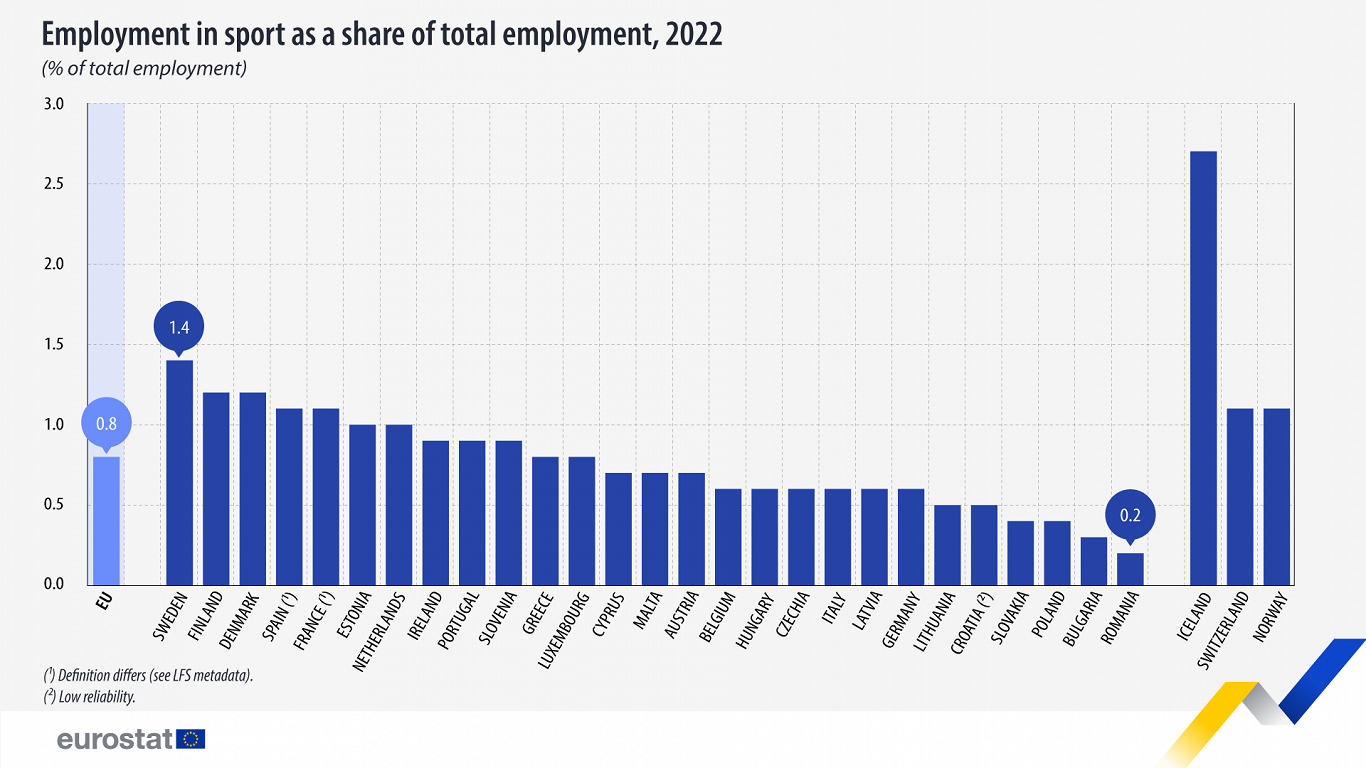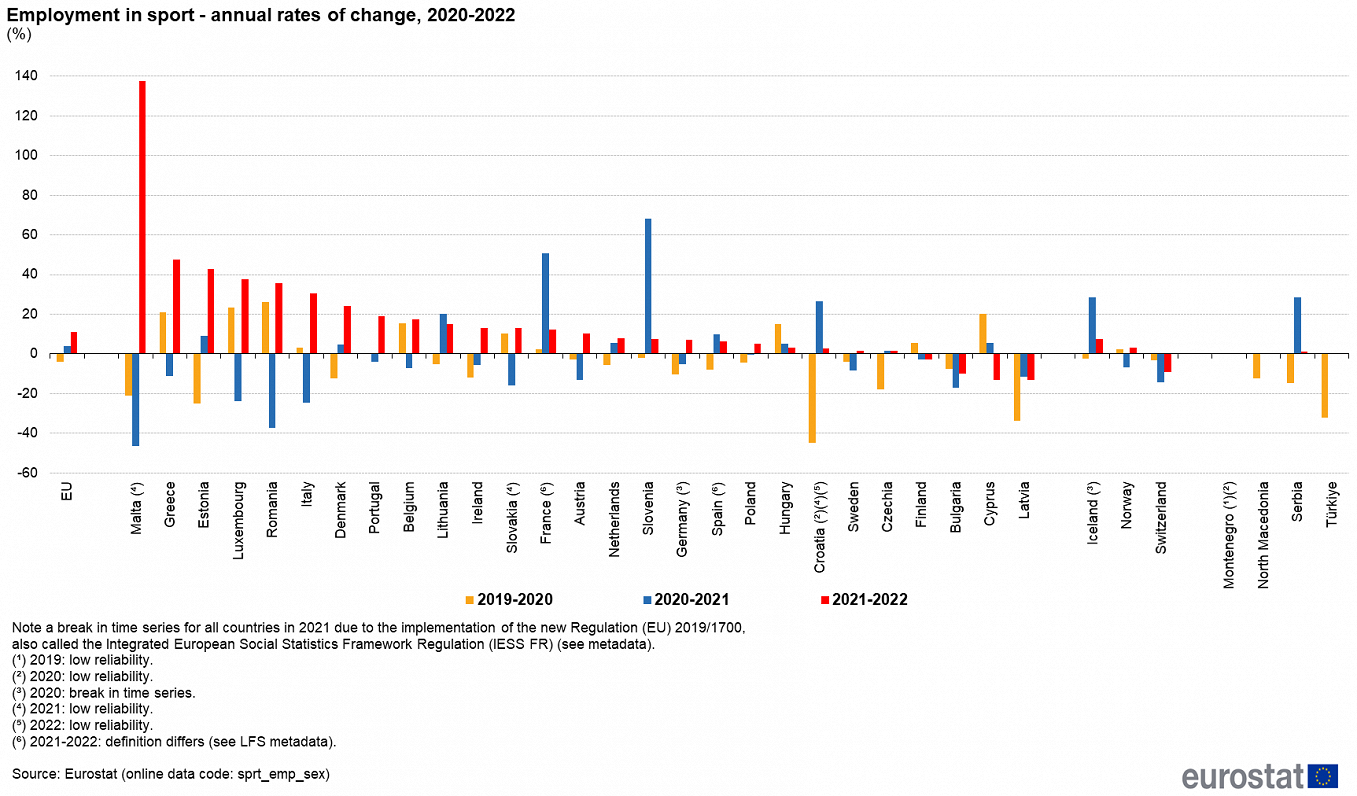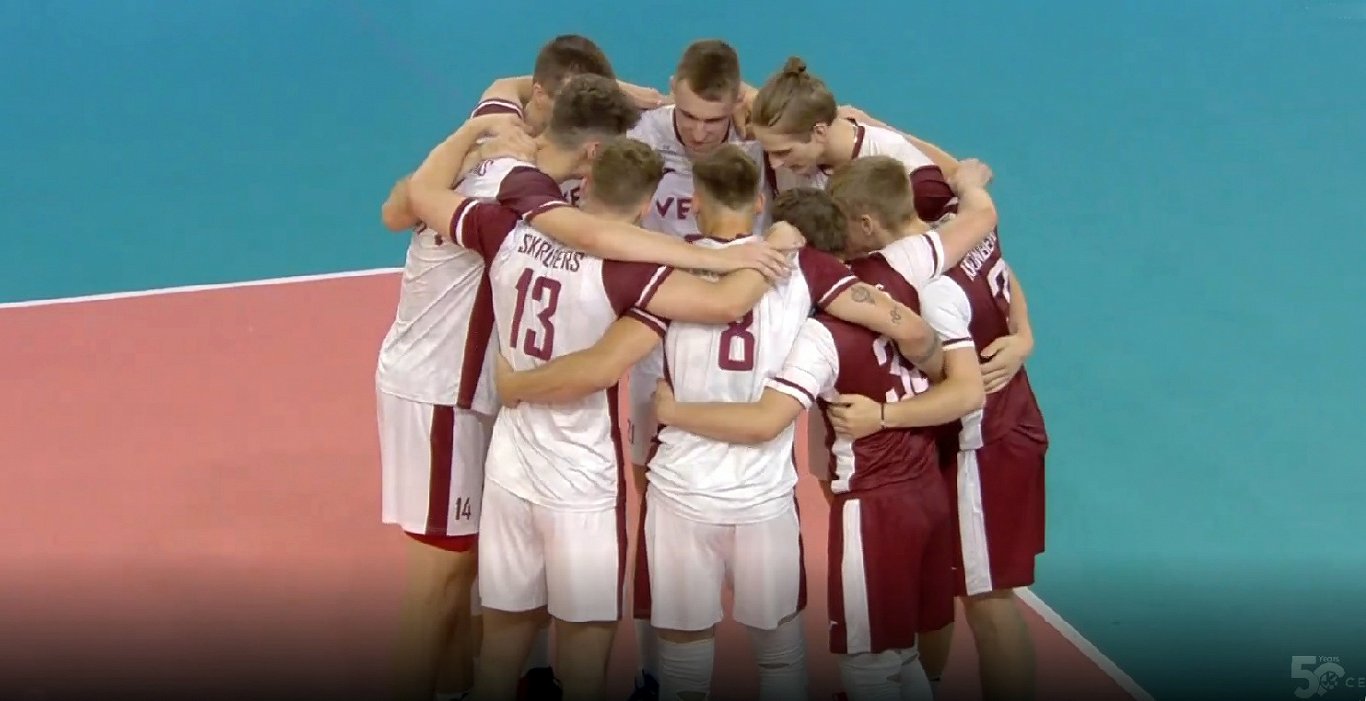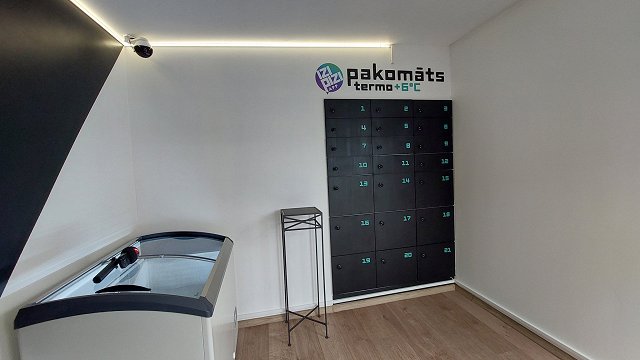
In Latvia, around 5,000 people were employed in sport in 2022. The figure has been steadily declining in recent years. For 2019, 10,000 people were employed in the sector. In 2020 that figure dropped to 7,000, then dropped again in 2021 to 6,000.
The 2022 figure represents 0.6% of the working population in Latvia against an EU average of 0.8%.
The Latvian trend runs counter to the trends in Lithuania and Estonia, where the number of people employed in sports has been rising. Lithuania had 6,000 people employed in sport in 2019 and 8,000 in 2022. Estonia had 6,000 people employed in sport in 2019 and 7,000 in 2022.

From 2019 to 2020, employment in sport fell in 16 of the 27 EU Member States, with Croatia, Latvia, Estonia and Malta recording the largest decreases (more than -20 %). Of the 11 countries with a positive change, four (Romania, Luxembourg, Greece and Cyprus) were able to increase employment in sport by at least 20 %.
In 2022, employment in sport represented 0.8 % of total EU employment, ranging from 0.2 % in Romania to 1.4 % in Sweden. In Sweden, Finland, Denmark, Spain, France, Estonia and the Netherlands, employment in sport accounted for at least 1 % of total employment
In 2022, 1.5 million people were employed in sport in the EU. Men (54.6 %) outnumbered women, resulting in a slightly narrower gender employment gap than that observed in total employment figures. Looking at employment by age, the majority of people employed in sport belonged to the age group 30-64 years. It is notable that the share of young people, aged 15-29 years employed in sport, was twice the share in total employment.
In recent years, sport has acquired a significant profile in a number of European strategies and programs.


























